Taj, Tigers, Temples & Rajasthan's Palaces
- Return flights from London
- 13 nights in 4 and 5-star and heritage hotels plus 1 night in flight
- 13 breakfasts, 5 lunches, 13 dinners and welcome drink
Mon–Fri: 0900 - 1800
Sat: 0900 - 1700
Sun & BH: Closed
Explore the wonders of the west on a holiday that includes both a luxurious journey on the Rocky Mountaineer train and an unforgettable Alaskan cruise.
Iconic cities, famous landmarks and natural wonders are waiting to be discovered as you journey from Melbourne to Brisbane.
When you think of Jordan, Petra likely springs to mind. While this ancient wonder deservedly shines as the country's star attraction, Jordan offers so much more. Here’s our guide to the top five sights you can enjoy on tour.
Prepare to be amazed as you step into Jerash, home to the most spectacular Roman ruins outside Italy. Wander through Hadrian’s gate and along the side of the hippodrome, which once hosted chariot races and gladiatorial contests.
If you continue to follow the path, passing fragrant red pepper trees, you’ll be at the amphitheatre. Here you can climb to the top of the steps for panoramic views over the site. You’ll often be serenaded by some Jordanian veterans playing the bagpipes and drum. Enjoy a pleasant stroll along the path to the Temple of Artemis, lined with Roman columns.
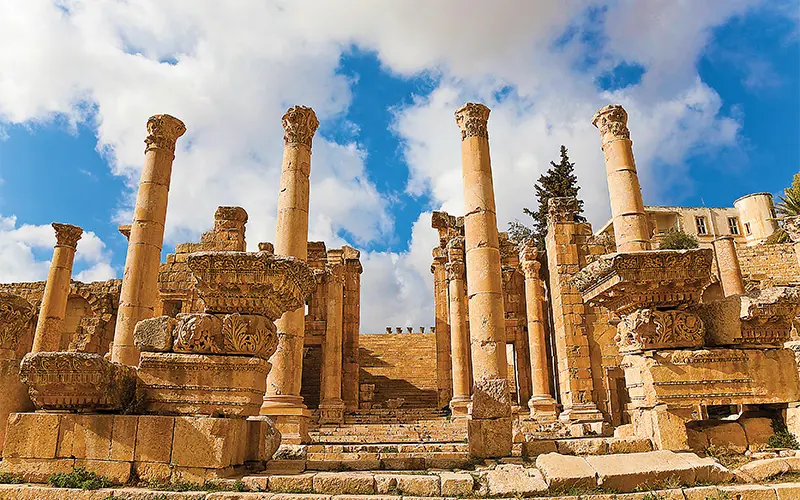
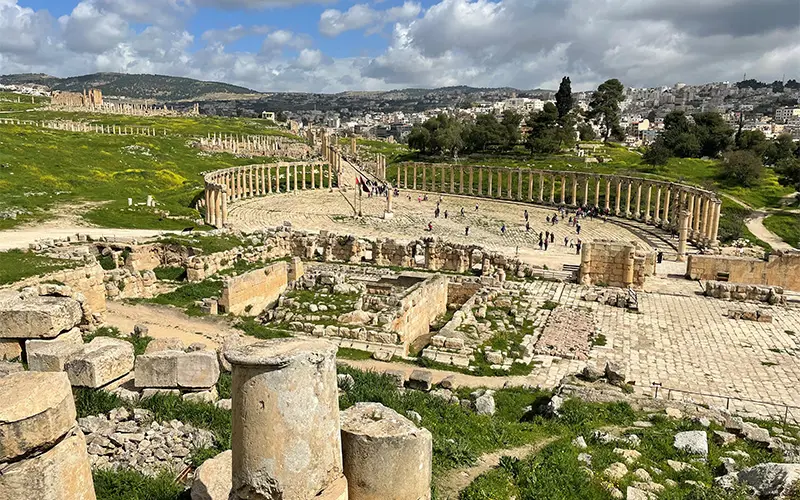
Venture south into Wadi Rum, following the footsteps of the legendary Thomas Edward Lawrence. Here you’ll see the monolithic mountain, the seven pillars of wisdom, thought to be the inspiration for the title of Lawrence’s book. The Wadi Rum defies a typical desert stereotype. Instead of endless dunes and the occasional oasis, this landscape is peppered with sandstone mountains that dot the horizon and it’s perhaps reminiscent of Americas Monument Valley. With its other worldly appearance, it’s unsurprising that so many movies have been made here.
Sunsets here are mesmerising (as are the sun rises) - find the perfect rock to climb as a viewing platform and watch as the sun slowly descends behind the sandstone mountains. As day turns to night, look to the skies. While there is still a little light pollution from nearby camps, look up and it’s easy to spot familiar constellations amongst the thousands of stars. An optional trip could take you to a site where you can use telescopes for a closer look, those visiting around March may have the opportunity to see Sirius “the diamond of the night sky”, Beetlejuice “the friendly girl next door, the Beehive, Orion’s Nebula found in the sword of Orion, Polaris “the North Star” and its companion Polaris B.
Considered the “City of Mosaics”, spending a few hours in Madaba is a treasure trove of art. Wander through the streets, where you’ll find small shops and cafes – keep your eyes peeled for the street vendors selling freshly squeezed pomegranate juice and enjoy a taste of this refreshing drink.
Head to the Church of Saint George where you’ll see a mosaic of the oldest surviving geographical depiction of the Holy Land. Dated back to the 6th Century AD, the map was uncovered in the late 19th Century, and while it has been damaged over the years, what remains is incredibly intricate in design and beautiful to sea. Within the mosaic, you’ll see boats travelling on the Dead Sea, the city of Jerusalem with Saint Stephens Gate and Damascus Gate, fish swimming in the River Jordan and a number of biblical sites.
Just a short drive from Madaba is Mount Nebo, on a clear day stand on the viewing platform and take in the spectacular panoramas that includes the Dead Sea and Jerusalem. While here, you can step inside Moses Memorial Church and see beautiful mosaics that have been uncovered during archaeological digs, and outside the Serpentine Cross sculpture created by Italian artist Gian Paolo Fantoni.
Jerash is absolutely a highlight. I’ve never been to a better Roman site outside of Italy – it is on a huge scale and so well preserved. We loved exploring the hilltop temple ruins and walking along the colonnaded streets and open plazas – it really is like stepping back in time.
Stuart, Product Portfolio Manager
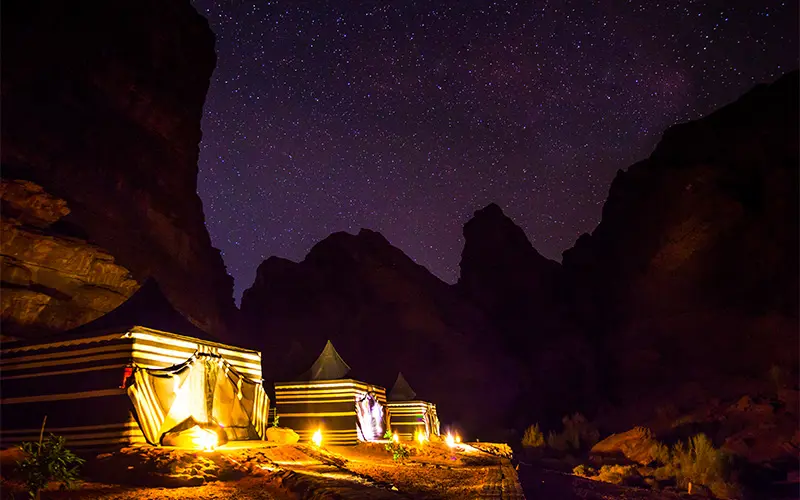
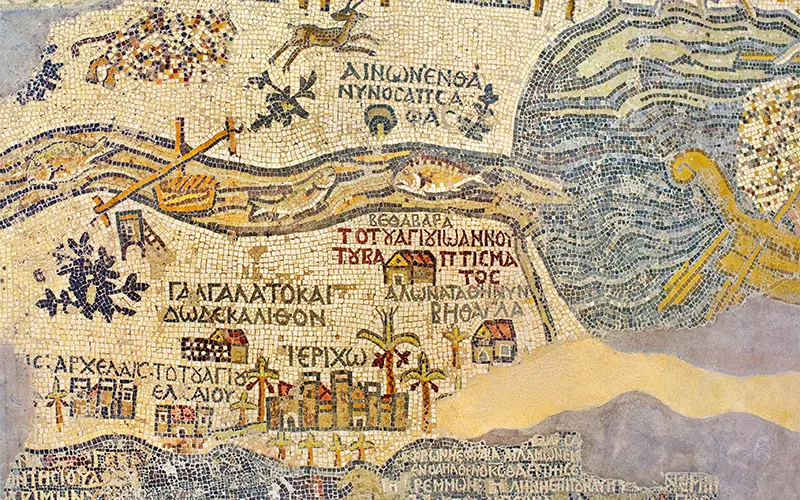
No visit to Jordan is complete without a visit to Petra, but it’s safe to say that this experience is more spectacular than you can imagine. You’ll start with a leisurely 0.75 mile walk through the Siq, a narrow canyon with cliff-faces up to 80m high, before you catch your first view of the Treasury building. And it is breathtaking.
At different times of day, the Treasury appears to change colour – with a golden hue in the morning and rose red in the afternoon. Standing at a massive 40 metres tall, decorated columns draw the eyes upward and camels sitting outside resting in the sun only emphasise it’s grandeur.
The Classic Trail at Petra takes you from the Treasury, down the Street of Facades and the Nabatean Theatre, along the Colonnade to the Qasr-Al-Bint (the Palace of the Pharaoh’s Daughter). Compared to many of the surrounding buildings that lie in ruins, this is one of the monuments of Petra that appears to be remarkably intact. With plenty of free time to explore further, there are various routes off the classic trail that you can take to discover more of this expansive archaeological site. Feeling energetic? Climb almost 800 steps to visit Ed-Deir, the Monastery, it can be hard work with many of the steps having worn away, although there are a few places for you to pause and take in the view. It has a similar look to the Treasury but is much bigger and due to its remote location, often quieter. The High Trail will take you up and across to see the Urn Tomb, Silk Tomb, Corinthian Tomb and the Palace Tomb which are collectively known as the Royal Tombs each with their own distinguishing features.
At 423 meters below sea level, the shores of the Dead Sea mark the lowest point on earth, and it forms part of the border with Israel. Due to the high salinity of the water aquatic organisms and plants can’t survive here – hence its name. You don’t swim in the Dead Sea, you enjoy a surreal floating experience. And you’ll often see people reading books and magazines as they lay back and relax in the water.
The Dead Sea is believed to have therapeutic properties and on many of the beaches you will find mud pots. It’s recommended that you cover yourself in mud and sit in the sun for a short while until you feel that it is drying up. Then, simply walk down to the water and wash it off.
The main source of water for the Dead Sea is the River Jordan. On the Eastern bank of the river is ‘Bethany Beyond the Jordan’ and is believed to be the place where John the Baptist lived and preached. Over the last 30 years, excavations have unearthed ancient churches, baptismal pools and caves and played a big role in understanding of Christianity in the region and it has been recognised as a UNESCO World Heritage Site. You might choose to visit this site on a tour to Jordan, and while here, you’ll see a range of the excavations, the “modern” St. John the Baptist Church and marble steps that lead down to the river.
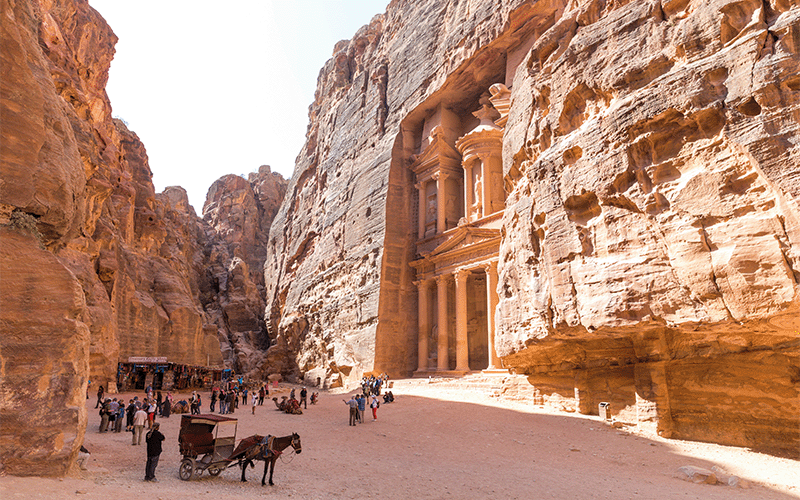
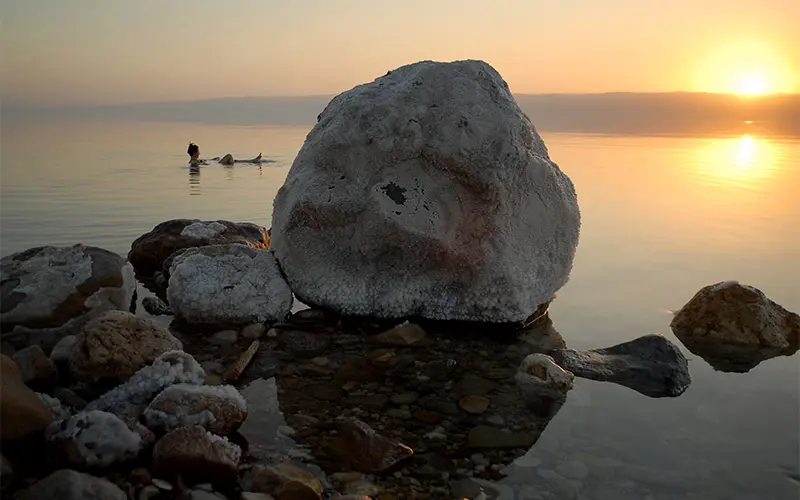
From Roman ruins to otherworldly deserts, from ancient mosaics to natural spa treatments, Jordan offers a journey through time and across diverse landscapes. Each of these five sights contributes to the rich tapestry that makes Jordan an unforgettable touring destination.

Discover historic and biblical sites, explore the 'Lost City' of Petra and soak up magical desert landscapes as you immerse yourself in Jordan's treasures.
Discover historic and biblical sites, explore the 'Lost City' of Petra and soak up magical desert landscapes as you immerse yourself in Jordan's treasures at Christmas